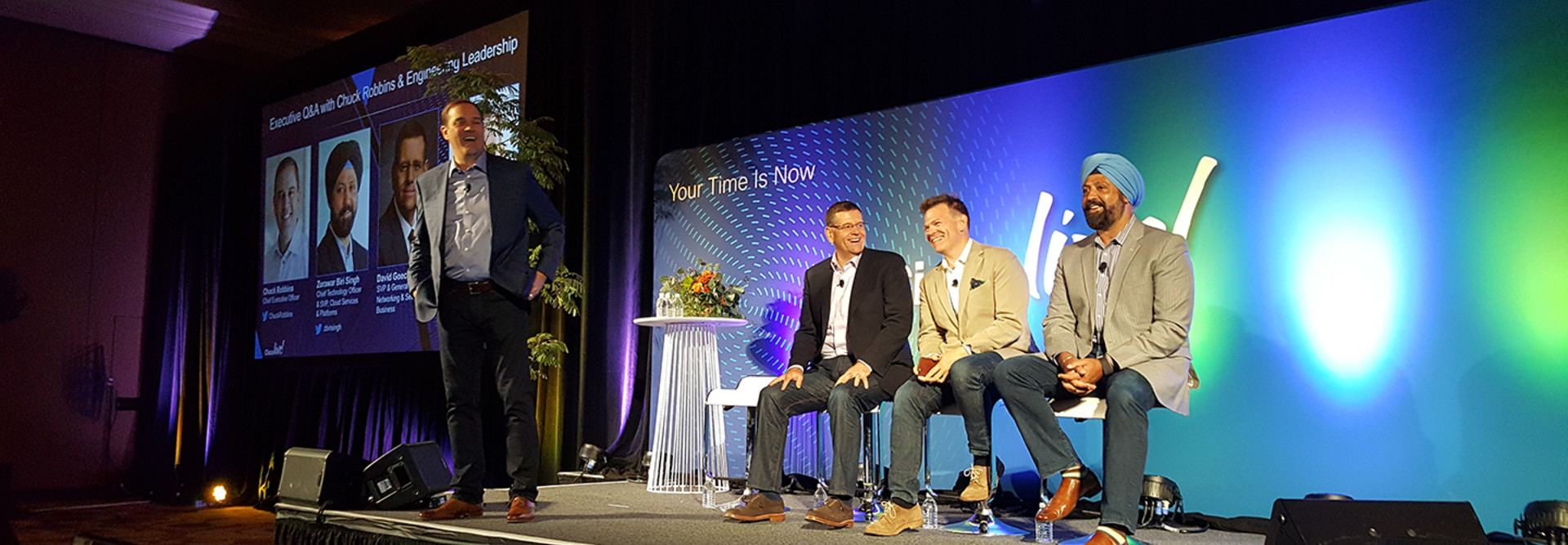Cisco Live 2016: Internet of Things Will Become Easier for Businesses to Deploy
Cisco Systems wants to make it easier for businesses to deploy Internet of Things solutions and derive value from the data they generate. That was one of the key takeaways from a press conference in Las Vegas at the Cisco Live 2016 conference that featured top Cisco executives.
Cisco CEO Chuck Robbins said that he sincerely believes “that we’re at a moment in time where the technology transitions that are occurring have the opportunity not only to transform cities, countries and business, but also really to allow us to attack some of the biggest problems in the world.”
Reshaping the IoT Model
A key tech trend Cisco wants to help shape is the Internet of Things. Robbins said that technology is going to “fundamentally change the business models that many of our customers are thinking about.” Just as Cisco is moving to a model that focuses more on recurring revenue and subscriptions and is more software-oriented, the company has customers that have similar aspirations, Robbins said.
The IoT will allow companies to derive value from connected devices thanks to analytics on the data that they generate, Robbins said.
“Whether you are managing elevators that you are going to connect, or whether you are managing jet engines, the opportunity is for the connection itself to give you much more intelligent information so that you can provide a higher value to your customer, and frankly at a lower cost to you as an organization,” he said. “So we do see this transpiring.”
Robbins added that he think when the Internet revolution first exploded in the 1990s, the “killer app” that dominated the early web was e-commerce. Now, he said, a key benefit of the industrial Internet and the IoT is the ability to use analytics to fix machines before they fail, for example.
“As we see this first wave of industrial devices being connected to the Internet, I believe that preventative maintenance and this transition to a services focus will be the initial killer app for all of this connectivity,” he said.
Making It Easier to Deploy IoT
Rowan Trollope, senior vice president and general manager of Cisco’s IoT and applications group, said during the press conference that Cisco is demonstrating an innovative IoT proof-of-concept solution at the conference that uses a presence application.
Essentially, the app — either on a smartphone or tablet — alerts a video teleconferencing unit that a particular person is in a conference room and it connects to that person’s extension. The lighting in the room, which is connected via a Cisco server, switches to that person’s preset settings; if the person likes the lights to be very bright, the brightness is increased, for example.
Trollope said that the market is starting to see the emergence of Power over Ethernet powering LED lighting, “and we see that as an incredible cost savings opportunity for companies, but also as control and visibility into that infrastructure.”
Sensor information on the edge of networks is now being pulled back into the network and used to control devices, he said. “But it’s just exploding and really hitting that Cambrian explosion, candidly, for our partners in lighting and all other business systems and other things you would see in the digital office, for example,” he added.
Trollope also said that there are changes afoot in the market that will make it easier to deploy IoT solutions, particularly in industrial automation. He said that before, the market was in an era where essentially all of the work to support industrial automation had to be on-premises.
“They literally would plug in Windows XP boxes to do that work,” he said. “Those boxes are not being replaced, essentially. They’re not being upgraded. They’re being taken out.”
Now, the technology is “moving either to the local data center where we have much better control and management over these kind of things, or the cloud or to a combination of both,” Trollope said.
Before, the on-premises solution was the only way to deploy industrial automation in a cost-efficient way. Today, Trollope said, “what you used to run on a Windows XP box, you can actually now run on a router, or you can run it in a local data center or you can run it in the cloud.”
Read articles and check out videos from BizTech coverage of Cisco Live here.









